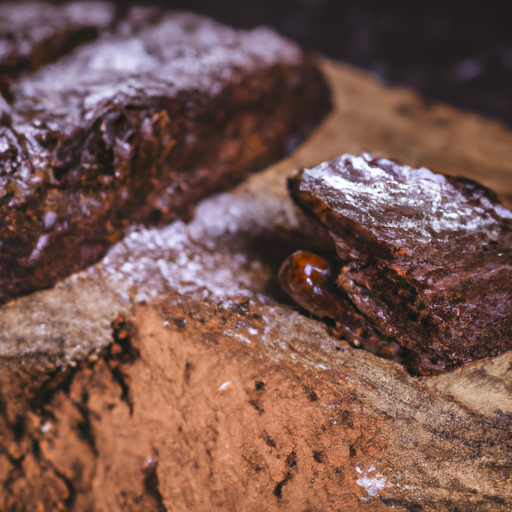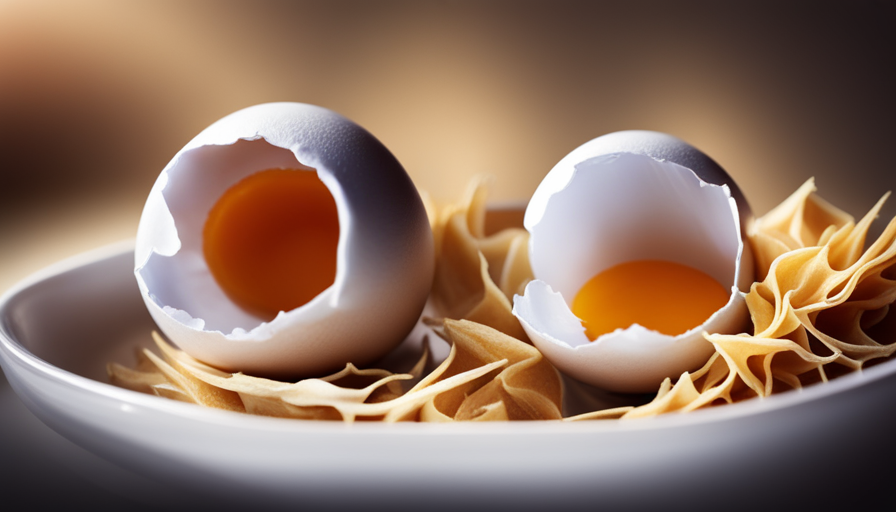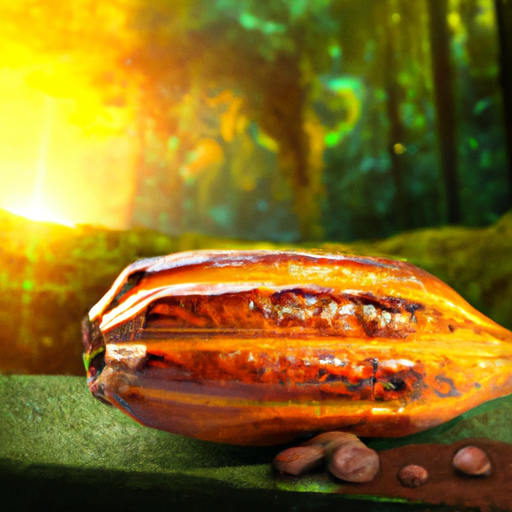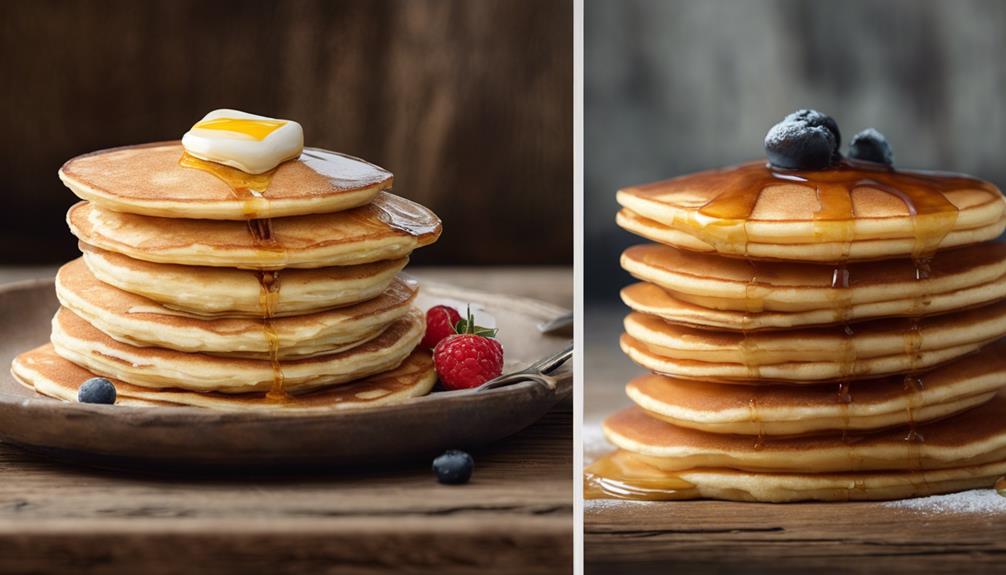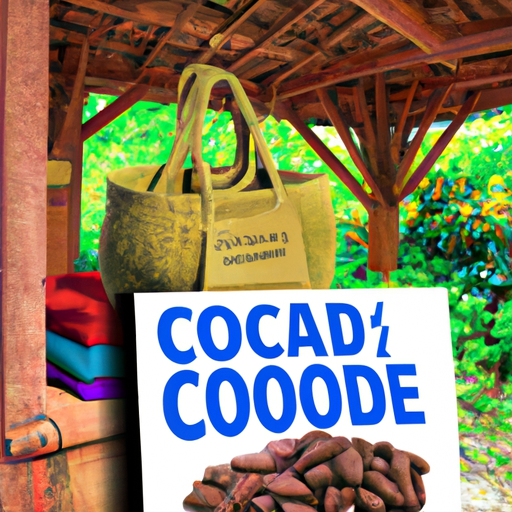I came across an incredible recipe recently that I absolutely must share with all of you. Imagine this: decadent, chewy brownies that are not only amazingly tasty, but also completely vegan. That’s right – vegan brownies! And the greatest thing? They’re made with basic, wholesome ingredients like dates and raw cacao powder.
Now, I know what you might be thinking. How can vegan brownies possibly taste as good as the traditional ones? Well, let me assure you, these brownies are a game-changer. The dates lend a natural sweetness and moisture, while the raw cacao powder adds that intense chocolate flavor we all crave.
In this article, I will guide you step-by-step on how to whip up these delectable vegan brownies. From gathering the ingredients to baking them to perfection, I’ll be there every step of the way. So, get ready to indulge in a guilt-free treat that will satisfy your sweet tooth and leave you wanting more.
Let’s dive in and make some mouthwatering vegan brownies together!
Key Takeaways
- Raw cacao powder creates a decadent dessert without added sugars or artificial additives, providing a rich chocolate flavor.
- Vegan brownies made with raw cacao powder are a satisfying and nourishing guilt-free dessert option, suitable for those following a vegan or plant-based diet.
- Dates, used as a natural sweetener in vegan brownies, are a good source of fiber and essential minerals like potassium and magnesium, making them a healthier alternative to refined sugars.
- The combination of raw cacao powder and dates creates a delicious and nutritious treat that provides natural sweetness and depth of flavor, making it a versatile dessert option for people of all ages.
Gather Your Ingredients
Now that you’ve got your apron on and your baking mood on point, it’s time to gather up all those deliciously healthy ingredients for your vegan brownies!
When it comes to sweetening your brownies, dates are a fantastic option. Not only do they provide natural sweetness, but they also bring a host of health benefits to the table. Dates are packed with fiber, potassium, and antioxidants, making them a nutritious alternative to refined sugars. Plus, they add a lovely caramel-like flavor that perfectly complements the richness of the raw cacao powder.
Speaking of which, raw cacao powder is a must-have ingredient for any vegan brownie recipe. It’s full of antioxidants and has a deep, intense chocolate flavor that will satisfy even the biggest chocolate cravings.
Now, let’s move on and prepare the date paste for our brownies.
Prepare the Date Paste
First, blend the sweet, gooey dates into a smooth paste. This will provide the base for our delicious vegan brownies. To make the date paste, follow these three simple steps:
- Soak the dates in warm water for about 10 minutes to soften them up.
- Drain the water and place the dates in a blender or food processor.
- Blend until the dates form a thick, sticky paste.
When making the date paste, you can also experiment with alternative sweeteners like maple syrup or agave nectar to add a different flavor profile.
It’s important to know how to store date paste properly. Transfer the paste into an airtight container and refrigerate for up to two weeks. Alternatively, you can freeze it for longer storage.
Now that our date paste is ready, let’s move on to the next step and mix the dry ingredients for our vegan brownies.
Mix the Dry Ingredients
Once you’ve blended the date paste, it’s time to mix together the dry ingredients for your delicious plant-based treats.
Mixing the dry ingredients is a crucial step in achieving the perfect texture and flavor in your vegan brownies. Start by sifting 1 cup of all-purpose flour into a large mixing bowl. This will help remove any lumps and create a lighter, fluffier batter.
Next, add 1/2 cup of raw cacao powder, which will give your brownies a rich, chocolatey taste. If you don’t have cacao powder on hand, you can use unsweetened cocoa powder as a substitute.
To enhance the flavor, sprinkle in a pinch of salt and 1/2 teaspoon of baking powder. Gently whisk all the dry ingredients together until well combined.
Now, it’s time to move on to blending the wet ingredients to complete your vegan brownie batter.
Blend the Wet Ingredients
To create a luscious, plant-based batter, it’s time to blend together the wet ingredients for your scrumptious treats. Here’s what you’ll need:
- Medjool dates: These sweet and sticky gems will provide natural sweetness and a gooey texture to your brownies.
- Almond butter: This creamy ingredient adds richness and depth of flavor to the batter.
- Vanilla extract: Just a splash of this aromatic liquid will enhance the overall taste of your brownies.
Start by pitting the dates and placing them in a high-speed blender. Add in the almond butter and a splash of vanilla extract. Blend until you have a smooth and creamy mixture. This wet blend will bind all the dry ingredients together and create a moist and fudgy texture in your brownies.
Now, it’s time to combine the wet and dry mixtures to bring your vegan brownie batter to life.
Combine the Wet and Dry Mixtures
Now that your wet blend is velvety and smooth, it’s time for the magical union of flavors as the wet and dry mixtures come together, creating a harmonious dance of ingredients in your luscious batter. When it comes to vegan brownie recipes, there are different ways to combine wet and dry ingredients in baking. One method is to gradually add the dry mixture to the wet mixture, stirring gently until just combined. Another option is to make a well in the center of the dry ingredients and pour the wet mixture into it, slowly incorporating the two until a smooth batter forms. Whichever method you choose, be sure not to overmix, as this can result in tough brownies. Once the wet and dry mixtures are combined, it’s time to add optional mix-ins to customize your brownies to your liking.
Add Optional Mix-ins
Enhance your delectable batter with a tantalizing array of mix-ins that will ignite your taste buds with excitement.
Adding alternative mix-ins to your vegan brownie batter is a great way to experiment with different flavors and create unique variations.
Consider incorporating chopped nuts, such as walnuts or almonds, for a delightful crunch.
If you have a sweet tooth, try mixing in some vegan chocolate chips or shredded coconut for an indulgent treat.
For a fruity twist, add dried cranberries or chopped dried apricots.
You can also sprinkle some sea salt on top before baking to balance out the sweetness.
Get creative and let your imagination run wild with these flavor variations!
Now that your batter is perfectly mixed and enhanced with delicious add-ins, it’s time to bake the brownies and enjoy the mouthwatering results.
Bake the Brownies
Once your delectable batter is mixed and ready, it’s time to pop those mouthwatering brownies into the oven! Here are some tips for perfecting the brownie texture and a few vegan brownie recipe variations to add some flair to your treats:
- Don’t overmix: Gently fold in any mix-ins to avoid toughening the batter.
- Adjust baking time: For fudgy brownies, bake for a shorter time; for cake-like brownies, bake a bit longer.
- Use parchment paper: Line your baking dish with parchment paper to easily remove the brownies without sticking.
- Experiment with flavors: Add a pinch of cinnamon or a sprinkle of sea salt to enhance the taste.
Once the brownies are baked to perfection, allow them to cool before indulging in their rich, chocolatey goodness.
Allow Them to Cool
Hey, we all know the struggle of waiting for those freshly baked brownies to cool down before digging in, but trust me, it’s worth it!
Allowing your vegan brownies to cool completely is crucial for two main reasons. Firstly, it gives them time to set and firm up, ensuring that you get those perfect, fudgy squares when you cut into them.
Secondly, cooling the brownies allows the flavors to develop and intensify, making each bite even more delicious.
While you wait for your brownies to cool, why not think about how you want to decorate them? You can get creative with toppings like chopped nuts, coconut flakes, or even a drizzle of melted vegan chocolate.
So go ahead, exercise some patience, and when the brownies are finally cool, you can enjoy your delicious vegan brownies!
Enjoy Your Delicious Vegan Brownies!
Now that your vegan brownies have cooled down, it’s time to enjoy the deliciousness! These brownies are not only guilt-free, but they’re also packed with amazing flavors and health benefits.
As I take a bite into these moist and fudgy treats, I can’t help but appreciate the simplicity of vegan baking tips. Who knew that using dates and raw cacao powder could create such a decadent dessert?
Raw cacao powder is the star ingredient here, providing a rich chocolate flavor without any added sugars or artificial additives. Not only does it taste amazing, but it’s also loaded with antioxidants, iron, and magnesium, making it a healthier alternative to traditional cocoa powder.
These little brownies are not only satisfying my sweet tooth but also nourishing my body.
So go ahead and savor every bite of your vegan brownies. Indulge guilt-free, knowing that you’re treating yourself to a delicious dessert that’s also good for you.
Frequently Asked Questions
Can I substitute the raw cacao powder with regular cocoa powder?
Yes, you can substitute raw cacao powder with regular cocoa powder. However, raw cacao powder has more health benefits as it is less processed and retains more nutrients. It also adds a rich and intense flavor to vegan recipes.
How long can I store the date paste before using it in the brownie recipe?
The shelf life of date paste is around 2-3 weeks if stored properly in an airtight container in the refrigerator. Using dates as a sweetener in recipes not only adds natural sweetness but also provides added fiber and nutrients.
Can I use a different sweetener instead of dates in the date paste?
Certainly! While there are substitutes for date paste, I highly recommend using dates as a sweetener. Their natural sweetness adds depth and richness to recipes, plus they provide fiber, vitamins, and minerals.
Are there any gluten-free alternatives for the dry ingredients in this recipe?
Yes, there are gluten-free alternatives for the dry ingredients in this recipe. You can substitute gluten-free flour for regular flour, and carob powder or cocoa powder for raw cacao powder.
How can I make the brownies more fudgy or cake-like in texture?
To achieve a fudgy texture in vegan brownies, try using ingredients like avocado or coconut oil, which add moisture and richness. For a cake-like texture, use applesauce or mashed bananas to make them lighter. Experiment with different ratios until you find your desired texture.
What Is the Difference Between Raw Cacao and Regular Cocoa Powder in Vegan Brownies?
When making vegan brownies, choosing between raw cacao and regular cocoa powder can significantly impact the flavor and nutrition. Raw cacao processing methods maintain the bean’s natural enzymes and nutrients, resulting in a richer, more complex flavor compared to regular cocoa powder, which is processed at higher temperatures.
Conclusion
So there you have it, my friends! Making vegan brownies with dates and raw cacao powder is not only delicious, but also a healthier alternative to traditional brownies.
Did you know that studies have shown that consuming cacao powder can boost your mood and improve cognitive function? It’s true!
So not only will these brownies satisfy your sweet tooth, but they might also put a smile on your face and give your brain a little boost.
So go ahead, give this recipe a try and enjoy the incredible benefits of these delectable treats!

